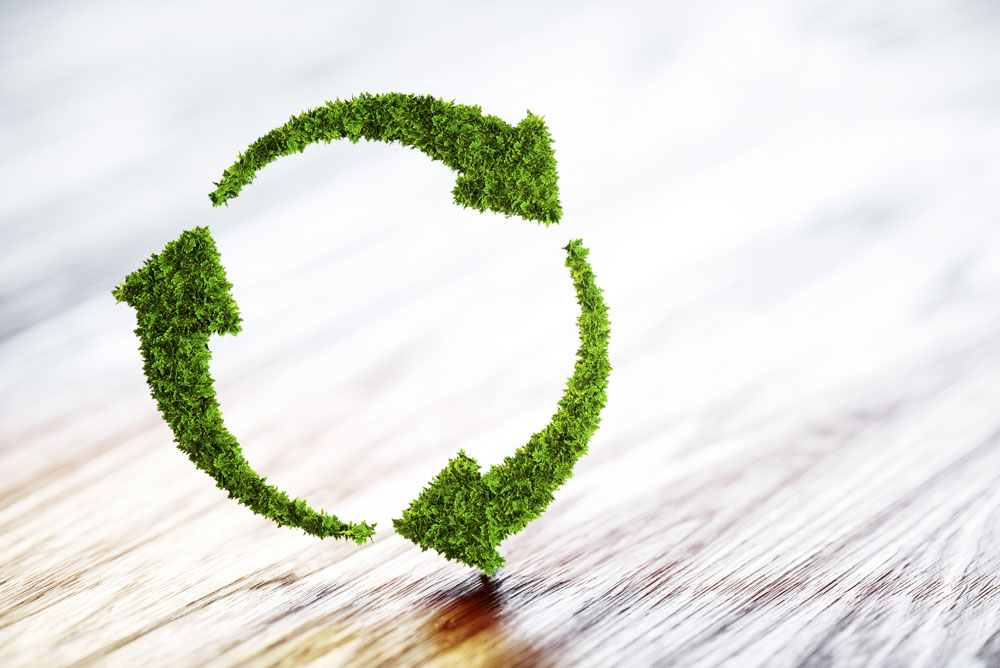Have you watched those sci-fi movies in which the future looks bright, especially when it comes to energy consumption and sustainability? Green energy everywhere within the next 30, 50 or 150 years. No more waste, every gram is reusable.
Let us leave those scenes aside for a second: Instead of the (very necessary) vision of how humans will handle sustainability in a far future, companies and organisations are already working on solutions for the present. One of them is the Circular Economy Partnership (CEP), which has been gaining traction recently.
Circular economy is an approach to design and production of (electronic) materials that can be reused in more than one item and by more than one player. It’s not only about refurbished products, but also components made to be employed by different manufacturers.
According to the World Business Council for Sustainable Development (WBCSD), one of the founding partners and the current secretariat of CEP, only 8.6% of the global economy is circular as of today. About 17% to 18% of the total e-waste is formally captured.
“That’s very poor,” said Brendan Edgerton, Director of Circular Economy at WBCSD. “Even if we’re not trying to achieve a hundred percent we should be much, much higher than that, and we strive to be. Obviously, even there [in e-waste capture], there’s a big gap that needs to be addressed.”
The CEP has six founding partners and 18 electronics companies, and Edgerton explains that they have identified six pathways along the electronics value chain with three main approaches to tackle the sustainability puzzle.
The first one is the materials which companies are putting into their products, and whether they are including more recycled content and moving away from hazardous substances.
The second aspect is design and manufacturing. The challenge here revolves around how to produce components and materials so that they can be refurbished, repaired, and remanufactured, or recycled at the very end of their life.
The last approach is to rethink the company business model to effectively recover waste and reinject it into the supply chain and processes. Take-back schemes, in which a corporation collects used materials, are one of the possibilities to explore further.
“All of the aspects are necessary, but there are many different solutions within each of those buckets that companies can choose from,” Edgerton said. “Depending on the product, or the component, or the material, some of these are going to be more feasible economically. They’re going to be more beneficial environmentally, even socially than others. So these are the decisions that each company has to make.”
Circular Economy for 5G and Beyond
While the bulk of circular economy attention is turned to the physical portion of sustainability, Edgerton acknowledges that the rapid technology transformation imposes challenges to industries. That is especially true when thinking ten years ahead, when society and its behaviours will not be the same.
“Any time there’s new technology, if thought is not given to how that is deployed and how it is expected to be captured afterwards, it makes it more challenging, right?” the executive proposed.
“You have new products, new materials, new components that companies towards the end of the life cycle might not know what is inside or how to dismantle, or how to process. So, whether that’s 5G infrastructure or a new type of device that’s out there, this only makes it trickier to handle those properly.”
From his experience, the telecom industry still has a way to go in getting on the same page regarding circular economy.
While there has not been too much conversation about circularity among players, Edgerton believes there is a need to bring the whole supply chain together to discuss how they can adopt circular economy-friendly actions. That includes original equipment manufacturers (OEMs), telcos, logistics, and end-of-life material handlers.
Addressing the big question
In a world more and more connected every day, one of the most difficult tasks in circular economy is tracking the material throughout its lifecycle, so that one can measure how circular a company, process, or component is.
CEP has come up with a creative solution: They will be launching a pilot project that will deposit a barcode at the molecular level of products and track them across multiple stages of the lifecycle. This way, they want to retrieve data on where those products are going and quantify how much is being recovered.
As of now, the pilot is just beginning, but Edgerton forecasts CEP will have more insights from this experience to share by the end of 2021.
All of those initiatives seem to send a signal of exciting times ahead for sustainability. While the telecoms industry has been shyly practising circular economy without labelling it that way, there are some limitations CEP and others try to address. But where there is a limitation there is an opportunity.
“I think it’s a number of different factors that play into why now is the time [the industry is paying more attention to sustainability]. I think [some of the challenges are] recognizing that e-waste is the fastest-growing waste stream in the world, recognizing the economic opportunity of actually capturing some of these materials and reusing them. And then, ultimately, how do we improve the livelihoods of people along the value chain through thinking about circularity?” Edgerton said.






